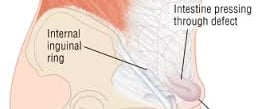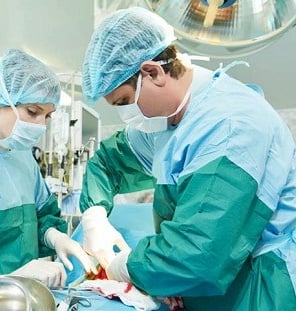What is a Hernia
What is a Hernia
Prof Fahed Youssef
3/2/20251 min read


What is a Hernia
Ultimately, all hernias are caused by a combination of pressure and an opening or weakness of muscle or fascia; the pressure pushes an organ or tissue through the opening or weak spot. Sometimes muscle weakness is present at birth; more often, it occurs later in life.
Anything that causes an increase in pressure in the abdomen can cause a hernia, including:
Lifting heavy objects without stabilising the abdominal muscles
In addition, obesity, poor nutrition, and smoking can all weaken muscles and make hernias more likely.
What Causes Hernias?
Ultimately, all hernias are caused by a combination of pressure and an opening or weakness of muscle or fascia; the pressure pushes an organ or tissue through the opening or weak spot. Sometimes muscle weakness is present at birth; more often, it occurs later in life.
Anything that causes an increase in pressure in the abdomen can cause a hernia, including:
Lifting heavy objects without stabilising the abdominal muscles
In addition, obesity, poor nutrition, and smoking can all weaken muscles and make hernias more likely.
Care
Expert surgeons providing personalized hernia treatment options.
Trust
Health
info@herniascentre.com
Tel: 01473279123
© 2025. All rights reserved.
Among patients undergoing incisional hernia repair, the use of mesh to reinforce the repair was associated with a lower risk of hernia recurrence over 5 years compared with when mesh was not used. However, with long-term follow-up, the benefits attributable to mesh were offset in part by mesh-related complications, according to a study published online by JAMA. The study is being released to coincide with its presentation at the American College of Surgeons Clinical Congress 2016.
Elective incisional hernia repair is one of the most commonly performed general surgical operations. In the United States alone, about 190,000 inpatient abdominal wall hernia repairs were performed in 2012. Prosthetic mesh is frequently used to reinforce the repair; it'susede in at least half of the abdominal wall hernia repairs performed in the United States. The benefits of mesh for reducing the risk of hernia recurrence or the long-term risks of mesh-related complications are not known.
Dunja Kokotovic, M.B., and Frederik Helgstrand, M.D., D.M.Sc., of Zealand University Hospital, Køge, Denmark, and Thue Bisgaard, M.D., D.M.Sc., of Hvidovre Hospital, Hvidovre, Denmark, conducted a study that included 3,242 patients with elective incisional hernia repairs in Denmark from January 2007 to December 2010. The researchers compared outcomes for hernia repair using mesh performed by either open or laparoscopic techniques vs open repair without the use of mesh.
Among the patients (average age, 59 years; 53 percent women), 1,119 underwent open mesh repair (35 percent), 366 had open nonmesh repair (11 percent), and 1,757 had laparoscopic mesh repair (54 percent). The median follow-up after open mesh repair was 59 months; after nonmesh open repair, 62 months; and after laparoscopic mesh repair, was 61 months. The researchers found that the risk of the need for repair for recurrent hernia following these initial hernia operations was lower for patients with open mesh repair (12 percent; risk difference, -4.8 percent) and for patients with laparoscopic mesh repair (10.6 percent; risk difference, -6.5 percent) compared with nonmesh repair (17.1 percent).
For the entirety of the follow-up duration, there were a progressively increasing number of mesh-related complications (such as bowel obstruction, bowel perforation, bleeding, late abscess) for both open and laparoscopic procedures. At 5 years of follow-up, the cumulative incidence of mesh-related complications was 5.6 percent for patients who underwent open mesh hernia repair and 3.7 percent for patients who underwent laparoscopic mesh repair. The long-term repair-related complication rate for patients with an initial nonmesh repair was 0.8 percent (open nonmesh repair vs open mesh repair: risk difference, 5.3 percent; open nonmesh repair vs laparoscopic mesh repair: risk difference, 3.4 percent).


